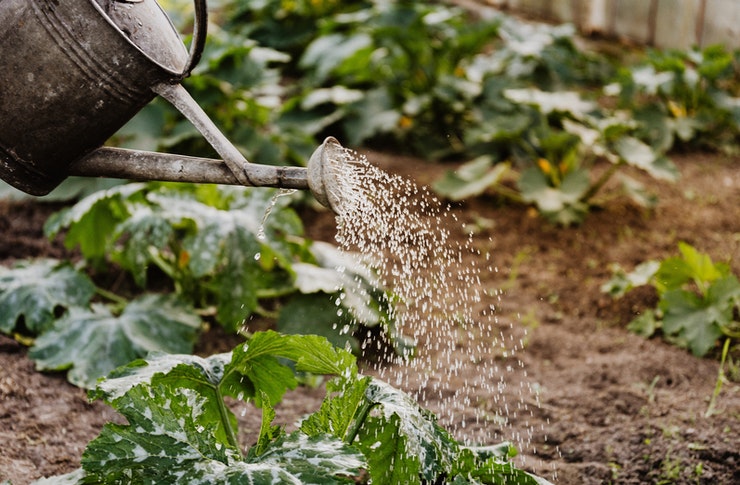Lesser-Known Plant Hacks Gardeners Are Discovering in 2025
The world of home gardening continues to evolve as enthusiasts discover innovative approaches to nurturing their green companions. In 2025, gardeners are embracing a new wave of unconventional yet effective plant care techniques that leverage everyday household items and natural solutions. From repurposing kitchen waste to implementing surprising watering methods, these lesser-known plant hacks are revolutionizing how we care for our indoor and outdoor gardens while promoting sustainability and reducing costs. Let's explore these game-changing techniques that are transforming ordinary gardening practices into extraordinary results.

Banana Peel Plant Hacks That Outperform Store-Bought Fertilizers
Banana peels have emerged as gardening gold in 2025, with their rich potassium, phosphorus, and calcium content making them ideal natural fertilizers. Rather than simply tossing peels into compost, gardeners are now creating targeted banana peel treatments. The most effective method involves drying and grinding peels into a fine powder that can be sprinkled directly into soil around potassium-loving plants like tomatoes, peppers, and roses. Alternatively, banana peel tea—made by soaking peels in water for 24-48 hours—delivers nutrients in liquid form, perfect for delicate houseplants and seedlings.
Another innovative approach gaining popularity is banana peel placement. By burying small pieces of peel just below the soil surface near plant roots, gardeners create slow-release nutrient stations that nourish plants for weeks. The decomposition process adds beneficial microorganisms to the soil ecosystem while improving its structure. For flowering plants particularly, this method has been shown to enhance bloom production and vibrancy without the chemical runoff associated with commercial fertilizers.
Natural Gardening Tricks Using Household Waste
Everyday kitchen scraps and household items are being repurposed as powerful gardening allies. Coffee grounds have become a multifunctional garden resource, serving as a nitrogen-rich soil amendment for acid-loving plants like blueberries and azaleas. Gardeners are creating dedicated “coffee stations” in their gardens, where grounds are regularly added to specific plants that benefit from increased acidity and nitrogen.
Eggshells, typically crushed and added to soil, are now being used in more targeted ways. The 2025 trend involves creating eggshell seed starters—filling half shells with soil for starting seedlings, then planting the entire biodegradable unit directly in the garden. This provides calcium directly to growing plants while preventing transplant shock. Additionally, eggshell water (made by soaking cleaned shells overnight) delivers calcium in liquid form, preventing blossom end rot in tomatoes and strengthening plant cell walls.
Perhaps most surprising is the resurgence of using human hair as a garden resource. Collected from hairbrushes or local salons, hair is being strategically placed around garden perimeters to deter pests like rabbits and deer, while simultaneously releasing nitrogen and keratin proteins as it decomposes, enriching the surrounding soil.
Home Hacks for Healthy Plants Using Common Items
Everyday household items are being repurposed into effective plant care tools. The self-watering system trend has evolved beyond wine bottles and plastic containers. Gardeners now create capillary systems using cotton rope or old t-shirt strips woven through drainage holes in pots, with one end in the soil and the other in a water reservoir. This maintains ideal moisture levels without overwatering.
Epsom salt (magnesium sulfate) applications have become more scientific in 2025. Rather than general soil amendments, gardeners now create calibrated Epsom spray solutions (1 tablespoon per gallon of water) applied as foliar feeds specifically during bloom periods for roses, peppers, and tomatoes. This targeted approach maximizes magnesium uptake when plants need it most.
Hydrogen peroxide solutions (1 part 3% hydrogen peroxide to 4 parts water) are being used to address root rot and fungal issues. This oxygen-boosting treatment rejuvenates soil by killing harmful pathogens while providing extra oxygen to struggling root systems. It’s particularly effective for houseplants showing signs of overwatering distress.
Advanced Soil Amendment Techniques for Garden Transformation
Biochar integration represents one of the most significant soil improvement trends of 2025. This charcoal-like substance, created through pyrolysis of organic materials, enhances soil structure, increases water retention, and creates a permanent carbon sink. Gardeners are making DIY biochar using simple fire pits with limited oxygen, then crushing and “charging” it with compost tea before adding to garden beds.
Another breakthrough technique involves strategic clay and sand integration. Rather than mixing these components uniformly throughout the soil, gardeners now create soil strata—specific layers of clay or sand placed strategically within the soil profile. For instance, a thin layer of sand placed six inches below the surface in clay-heavy soils creates a drainage plane that prevents waterlogging while maintaining moisture in the upper root zone.
Water Conservation Innovations Reshaping Plant Hydration
Water conservation has inspired ingenious solutions among gardeners. Ollas—unglazed clay pots buried in the soil with only their necks exposed—have been refined with modern adaptations. Current techniques involve connecting multiple ollas through tubing systems that can be filled from a single point, creating efficient subsurface irrigation networks across garden beds.
The moisture-retaining gel revolution has expanded beyond commercial products. Gardeners are now creating homemade hydrogels using natural materials like agar-agar and flaxseed gel. These biodegradable alternatives are mixed into soil around moisture-demanding plants, where they absorb water during irrigation and slowly release it as soil dries, reducing watering frequency by up to 60%.
Deep pot watering systems represent another innovation, where perforated pipes installed vertically in garden beds deliver water directly to deep root zones. This encourages plants to develop robust, drought-resistant root systems while minimizing surface evaporation and weed growth.
Conclusion
The plant hacks gardeners are discovering in 2025 represent a perfect fusion of traditional wisdom and modern innovation. By repurposing household materials, implementing strategic watering techniques, and utilizing natural soil amendments, gardeners are creating more resilient, productive gardens while reducing environmental impact. These approaches not only solve common plant problems but also promote sustainability by reducing reliance on commercial products. As these techniques continue to evolve, the gardening community’s collective knowledge offers solutions that are accessible, cost-effective, and remarkably efficient for plant enthusiasts of all experience levels.




